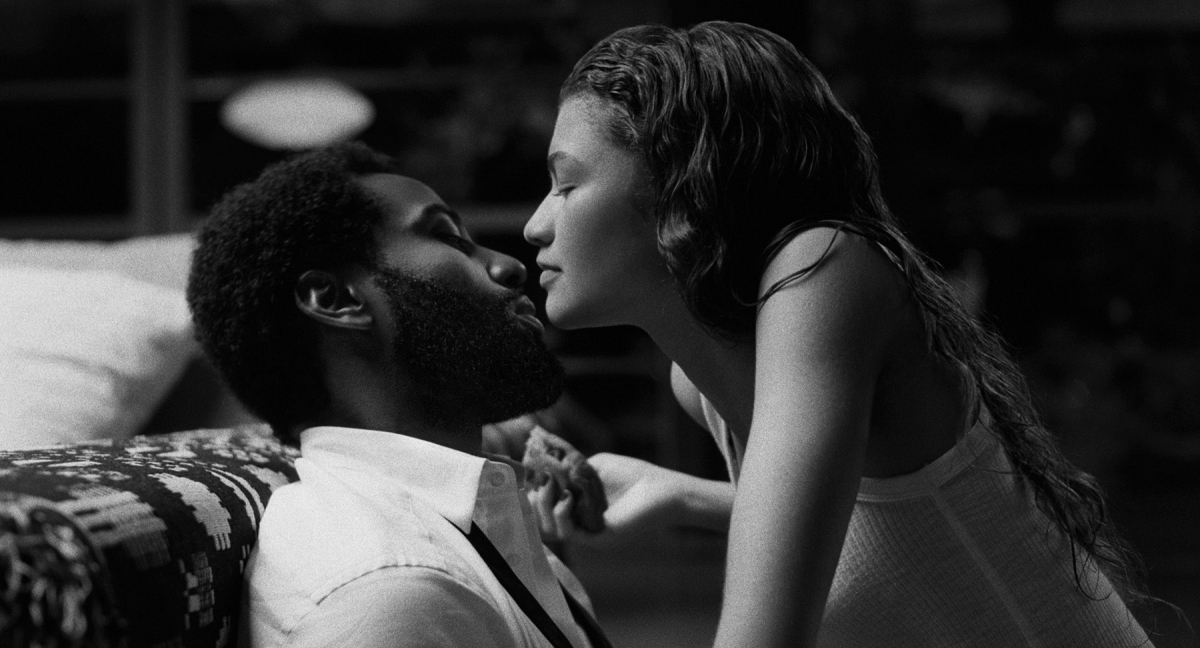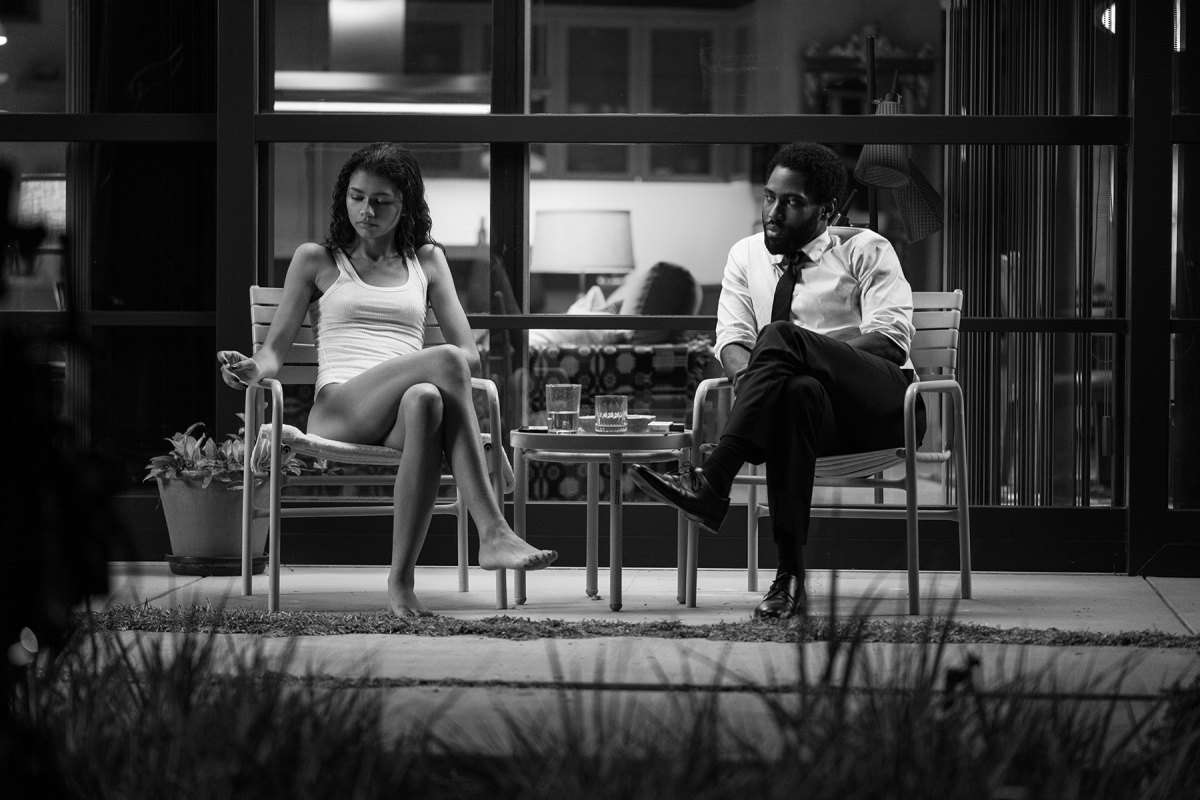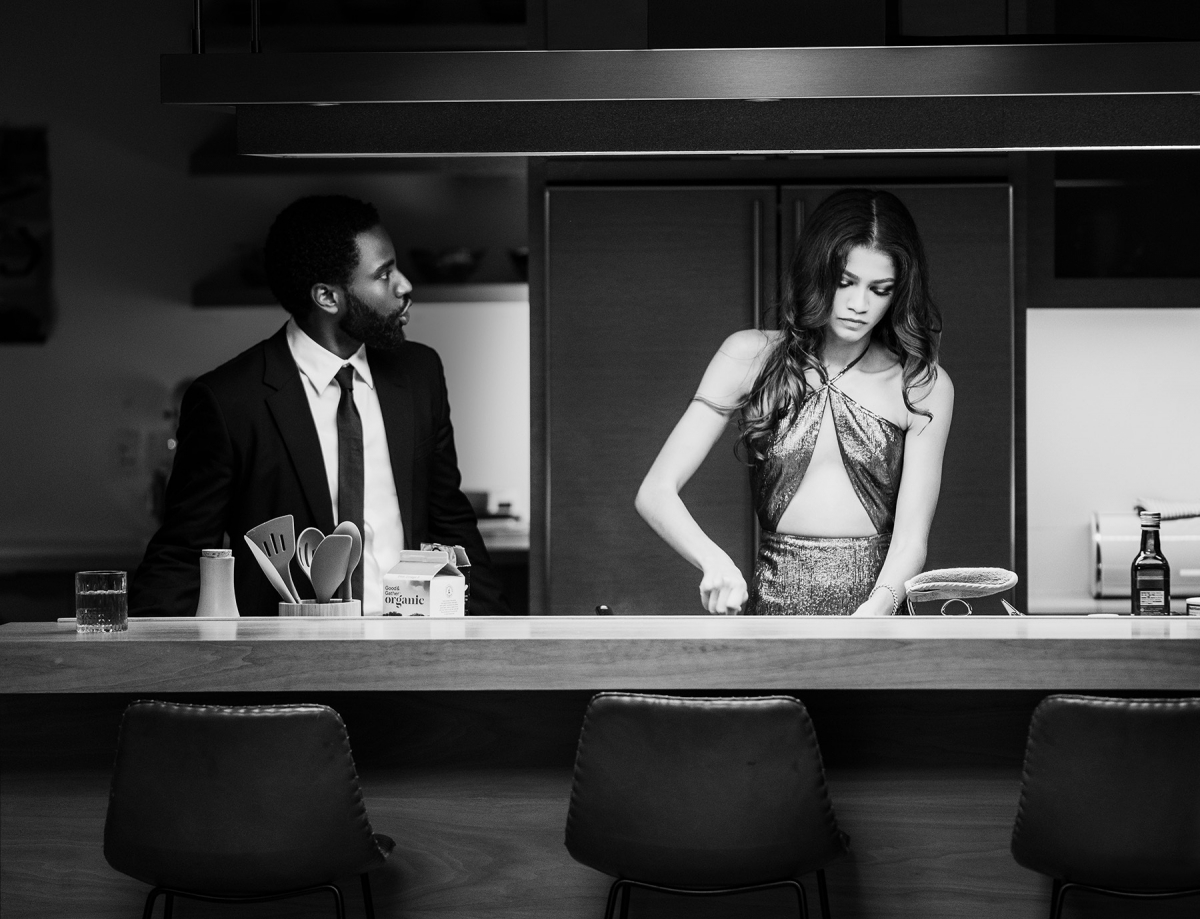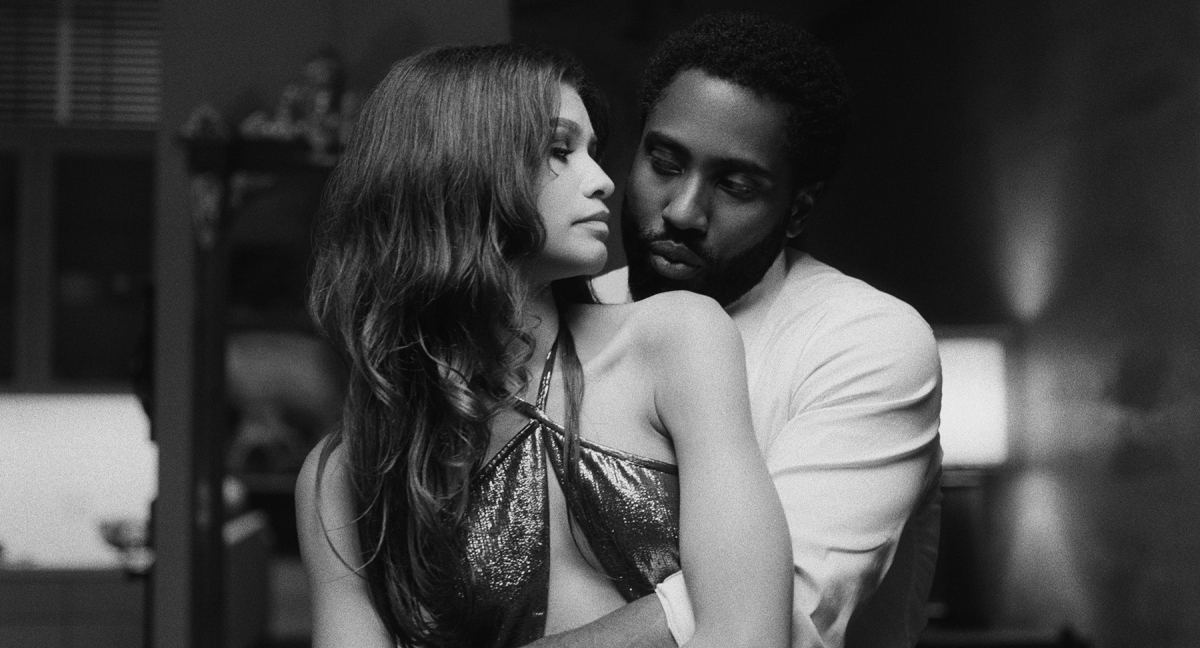Marcell Rév gets acquainted with ‘Malcolm & Marie’ during the pandemic

Malcolm (John David Washington) and Marie (Zendaya) have a combative romantic relationship in the tradition of "Who’s Afraid of Virginia Woolf?" Courtesy of Netflix.
With the shooting of the second season of Euphoria halted, writer-director Sam Levinson saw Malcolm & Marie as the means to provide employment for crew members from the HBO series during the COVID-19 pandemic. Malcolm (John David Washington) returns home from the world premiere of his movie with Marie (Zendaya) only to have a series of revelations threaten their relationship. The intimate drama subsequently gained international headlines when Netflix purchased the distribution rights for $30 million.
“The script was designed for this situation,” notes cinematographer Marcell Rév, who previously collaborated with Levinson on the feature Assassination Nation and Euphoria. “It’s two actors and one location so it’s pretty much tailored for the current circumstances. We were quarantined for two weeks before we started working. There were separate prep and shooting crews, there was no going in and out from the property and we tested before we prepped and before we started shooting. The strict protocols were difficult at times; however, this made it possible to rehearse with the actors for two weeks which is something you can’t afford to do on a normal production. The reduced crew and equipment made things a bit slower occasionally but resulted in a family vibe that inspired not just the crew but the actors too, and I believe it shows in the final product.”

The exterior and surroundings of the house were lit with Maxi Brutes and big spotlights. Courtesy of Netflix.
Producers and studios have become more accepting of shooting on film again. “It feels like the world is getting less conservative about that,” states Rév. “We thought if this was a project that we’re putting on our own resources, why can’t we do whatever we want to do. Sam and I both felt that this is a black and white movie, and we didn’t want to compromise on that. The last time I shot on DOUBLE-X stock was in film school. We loved the grain structure of it and the contrast of the stock. We thought if it’s black and white why not do it real black and white. The film follows a certain 1950s and 1960s chamber drama tradition that resonates well with this stock.” The film stock was three perf 35mm EASTMAN DOUBLE-X Black and White Negative 5222. “I shot most of my projects on the VISION3 500T. This stock in comparison is less sensitive, has higher contrast and a harsher grain structure, and that is exactly what we were looking for with this movie. The less sensitive film stock led me to a more old-school approach to lighting, just by the fact that we had to use bigger units and less diffusion.
On the set of "Euphoria". Photo courtesy of Marcell Rév.
“For most of the projects I try to shoot on film,” remarks Rév. “Some things work on digital, but for me film is more real, especially for this movie where we had references like Who’s Afraid of Virginia Woolf? We wanted to have that classic touch to it, therefore, film made sense.” The world of Malcolm & Marie is monochromatic. “Since it’s a black and white movie obviously you can’t rely on a natural color contrast that I usually use in my work a lot. You have to be conscious of certain things that pop as a strong color on a color negative that don’t necessarily pop in the grey scale. You need to be able to create the contrast and structure of the image by light only. 5222 is a high contrast negative but not that rich in the higher mid-tone area. We tried to use that to our advantage and avoid a grey movie and instead to create the deep blacks and hazy whites of 1950s American cinema.” Camera tests were conducted while shooting Euphoria. “Colorist Tom Poole at Company 3 and I made a LUT for the dailies that could be used for this movie as well. I knew that I wanted to underexpose it half a stop to protect the highlights.”

Writer-director Sam Levinson saw Malcolm & Marie as the means to provide employment for crew members from the HBO series "Euphoria" during the COVID-19 pandemic. Courtesy of Netflix.
A single Arricam LT camera was paired with Zeiss Standard Speeds lenses. “The black and white was a big enough visual statement. We didn’t want to choose an unusual lens that can get in the way of getting close to our characters.” states Rév. “It’s T2.1 and we were shooting most of it wide open except for wide shots. For the most part we were going between 32mm and 50mm. That’s like 90 percent of the movie. Sometimes you need a wider shot so we would put in a 25mm. There is nothing tighter than an 85mm.” The aspect ratio is 1.85:1. “We didn’t want to go with CinemaScope or anything flashy; it’s a relationship drama in a house. The aspect ratio had to be one that we didn’t notice.” The exterior and surroundings of the house were lit with Maxi Brutes and big spotlights. “Inside we used LiteMats and TileLights that are LED sources; the advantage of these lights is that they’re thin so you can mount them on the ceiling and avoid seeing them. You could create a large light box that is not very thick, so you have headroom for your actors.”
On the set of "Euphoria". Photo courtesy of Marcell Rév.
Principal photography took place from June 17, 2020 to July 2, 2020. “Production designer Michael Grasley [The Runner] found a beautiful house in Carmel,” remarks Rév. “It is called the Caterpillar House and Jonathan Feldman was the architect. It’s organic, modern architecture with two bedrooms and a living room that has sliding glass doors on three sides. The house is surrounded by hills and the whole movie takes place at night. So instead of walls we had to light all the landscape around the house. It was like shooting an exterior because you could see everything. It was a technical challenge given the sensitivity of the stock but the space was really cinematic and gave us a lot of angles. The rest of the house was narrower and a maze-like structure with two bedrooms and bathrooms where you could get the feeling of getting lost. This is definitely a performance driven movie but we really wanted it to have a strong visual language. We were looking for a location that we could put down dolly tracks around the house.”
No storyboards were created. “During the rehearsals with the actors we came up with the blocking and shots,” states Rév. “John and Zendaya are amazing and really great to work with. On this movie we were really letting their performance lead our camera but when needed they understood the technical side of the process too, and they were ready to repeat takes for a certain precise camera move or position. Key crew members were gaffer Danny Durr, who had to put huge lights on top of a lot of hills around the house with his crew in those 14 days, and key grip Jeff Kunkel. There were a lot of dolly moves in this one and Jeff was key gripping and dolly gripping at the same time. It wasn’t an easy one given the size of their crew but they both did an amazing job. I was operating. First AC Norris Fox and second AC and loader Jonathan Clark were keys for us to feel confident about the technical aspect of shooting film.”

The Double-X film stock was the biggest challenge and greatest technical gift for cinematographer Marcell Rév. Courtesy of Netflix.
The DOUBLE-X film stock was the biggest challenge and greatest technical gift. “It’s not a very sensitive stock so it forces me to light in a certain way that might not be the easiest way, but I think was effective for Malcolm & Marie,” observes Rév. “On this movie it was a different working method than what I’m used to with Sam. Rather than working to certain technical aspects we were following the performers, the mood of the scene, and what this material was asking for. We were changing our attitude every day and fine tuning the style of the movie according to the performances and script.” It was important for the audience feel like they were watching real-life events instead of a stage play. “There are a lot of screenwriters who write great dialogue and good plot twists but Sam [Levinson] is writing true scenes for movies, and that I think is something that very few are able to.”